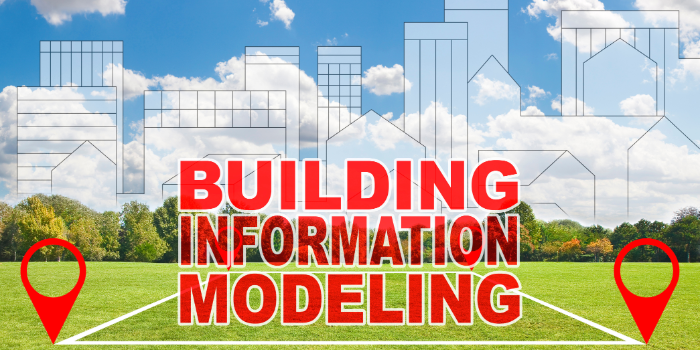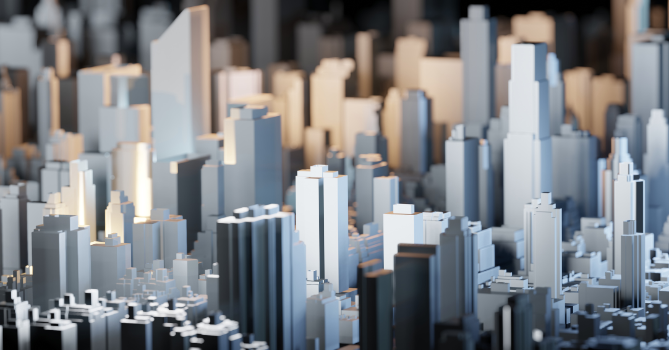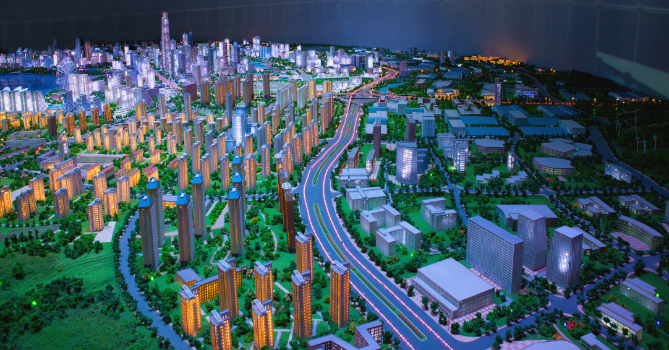
Sustainable Design Unleashed: The Transformative Power of BIM in Architecture
Hey there, welcome aboard! Today, we're diving into a hot topic in the world of architecture: how BIM (Building Information Modeling) is shaking up the game and making waves in sustainable architecture.
Buckle up as we explore the intersection of technology and sustainability, and how BIM is leading the charge towards greener, more eco-friendly buildings.
In this article, we'll break down what BIM is all about and why it's such a big deal for architects and builders alike. We'll take a closer look at how BIM is helping to tackle some of the biggest challenges facing our planet today, from reducing energy consumption to minimizing waste.
So, whether you're a seasoned architect or just curious about how technology is shaping the future of our cities, stick around. It's going to be an eye-opening journey!
Ready to get started? Let's dive in!
BIM stands for Building Information Modeling. It's like a digital twin for buildings. Imagine you're designing a house on your computer, but instead of just drawing pictures, BIM lets you create a 3D model that's super detailed. We're talking about every little thing, from walls and windows to pipes and wires – it's all in there.
But here's the cool part: BIM isn't just for designing buildings. It's also about managing all the information that goes into making them. Think of it as a big database that keeps track of everything, from the materials used to the cost of construction.
Now, why is this such a big deal? Well, for starters, it makes collaboration a whole lot easier. Architects, engineers, and builders can all work together on the same model, which means fewer mistakes and smoother projects.
But it's not just about working together – it's also about making better decisions. With BIM, architects can simulate how a building will perform before it's even built. Want to see how much energy it'll use? No problem. Curious about how sunlight will hit the windows? BIM can show you that too.

In short, BIM is like a superhero for architects. It helps them design better buildings, save time and money, and – most importantly – build a more sustainable future.
Alright, let's talk perks – specifically, how BIM (Building Information Modeling) is making sustainable architecture even cooler.
First up, energy efficiency. BIM lets architects get all sci-fi and simulate how a building will use energy before it's even constructed. That means they can tweak things like insulation and lighting to make sure the building is as energy-efficient as possible. And that's a big win for the planet – less energy used means fewer greenhouse gas emissions.
Next, we've got material optimization. With BIM, architects can get super granular about the materials they use. They can compare different options and pick the ones that have the smallest environmental footprint. Plus, they can track how much material they're using throughout the project, which helps minimize waste.
Oh, and let's not forget about water. BIM can help architects design buildings that use water more efficiently – whether it's capturing rainwater for irrigation or recycling graywater for flushing toilets. Every drop counts!
But wait, there's more. BIM also makes it easier to design buildings that are good for people. Think better air quality, more natural light, and spaces that just feel nicer to be in. And when people feel good in their buildings, they're more likely to take care of them – which means less maintenance and longer-lasting structures.
And here's the kicker: all of these perks add up to serious cost savings. Yep, you heard that right. By designing buildings that are more energy-efficient, use fewer materials, and require less maintenance, architects can save their clients a ton of money in the long run.
So, to sum it up: BIM isn't just about making buildings look cool (although it does that too). It's about designing smarter, more sustainable spaces that are better for the planet, better for people, and better for the bottom line.
Okay, so BIM (Building Information Modeling) sounds pretty awesome, but it's not all rainbows and sunshine. Like any superhero, it's got its challenges. But fear not – where there's a challenge, there's also a solution!
One biggie is interoperability. Basically, that's just a fancy way of saying that different software programs don't always play nice together. So, architects might run into issues when trying to share BIM models with engineers or contractors who use different software. But fear not! The solution? OpenBIM standards. These handy guidelines help ensure that everyone's speaking the same language, so to speak, making collaboration a breeze.
Next up, we've got training. Let's face it – BIM is pretty complex stuff, and not everyone knows how to use it like a pro. So, architects might need to invest some time and resources into training their team members. But hey, knowledge is power, right? By giving their team the skills they need to harness the full potential of BIM, architects can unlock even more benefits for their projects.
Oh, and let's not forget about data overload. With BIM, architects have access to a ton of information – maybe even more than they know what to do with! But fear not! The solution? Streamlining. By focusing on the data that's most relevant to their projects and cutting out the rest, architects can avoid getting overwhelmed and stay focused on what really matters.
So there you have it – challenges, meet solutions. With a little creativity and know-how, architects can overcome any obstacle that comes their way and make the most of BIM for sustainable architecture.

Alright, time to put on our future goggles and take a peek at what's on the horizon for BIM (Building Information Modeling) and sustainable architecture.
First up, we've got cloud-based collaboration. Picture this: architects, engineers, and builders all working together on the same BIM model – but they're not even in the same room. Thanks to the magic of the cloud, teams can collaborate in real-time from anywhere in the world. Talk about taking teamwork to the next level!
Next, we've got artificial intelligence ( AI). Yep, you heard that right – AI is coming to a BIM model near you. With AI, BIM software can analyze massive amounts of data and make predictions about how a building will perform – everything from energy usage to occupant comfort. It's like having a super-smart assistant helping architects make better decisions.
Oh, and let's not forget about generative design. This is where things get really sci-fi. With generative design, architects can set parameters like cost and sustainability goals, and then let the computer do the rest. The result? Design options that are optimized for efficiency, sustainability, and aesthetics. It's like having a million architects working around the clock to come up with the perfect design.
But wait, there's more. We've also got things like 3D printing, modular construction, and even virtual reality – all poised to revolutionize the way we design and build buildings.
So, what does all this mean for the future of sustainable architecture? Well, for starters, it means buildings that are smarter, more efficient, and better for the planet. It means architects who have more tools at their disposal to create spaces that are truly awe-inspiring.
Exciting stuff, right? The future of architecture is looking bright – and sustainable!
Ready for the grand finale? Let's bring it home!
And there you have it – the incredible journey of BIM (Building Information Modeling) and its role in shaping the future of sustainable architecture.
From its humble beginnings as a digital tool for architects to its current status as a superhero for the planet, BIM has come a long way. We've seen how it's revolutionized the way we design, build, and manage buildings, making them more energy-efficient, cost-effective, and user-friendly than ever before.
But more than that, we've seen how BIM is helping architects tackle some of the biggest challenges facing our planet today. From reducing carbon emissions to conserving water and materials, BIM is empowering architects to create buildings that not only look good but do good too.
So, where do we go from here? Well, the sky's the limit. With emerging technologies like AI, cloud-based collaboration, and generative design on the horizon, the future of sustainable architecture has never looked brighter.
But it's not just about the technology – it's about the people behind it. Architects, engineers, builders, and designers who are passionate about creating a better world, one building at a time.
So, as we look to the future, let's remember the power of innovation, collaboration, and sustainability. Together, we can build a world that's not only beautiful but also sustainable for generations to come.
Thanks for joining us on this journey. Until next time, keep dreaming, keep designing, and keep building a brighter future. Cheers!